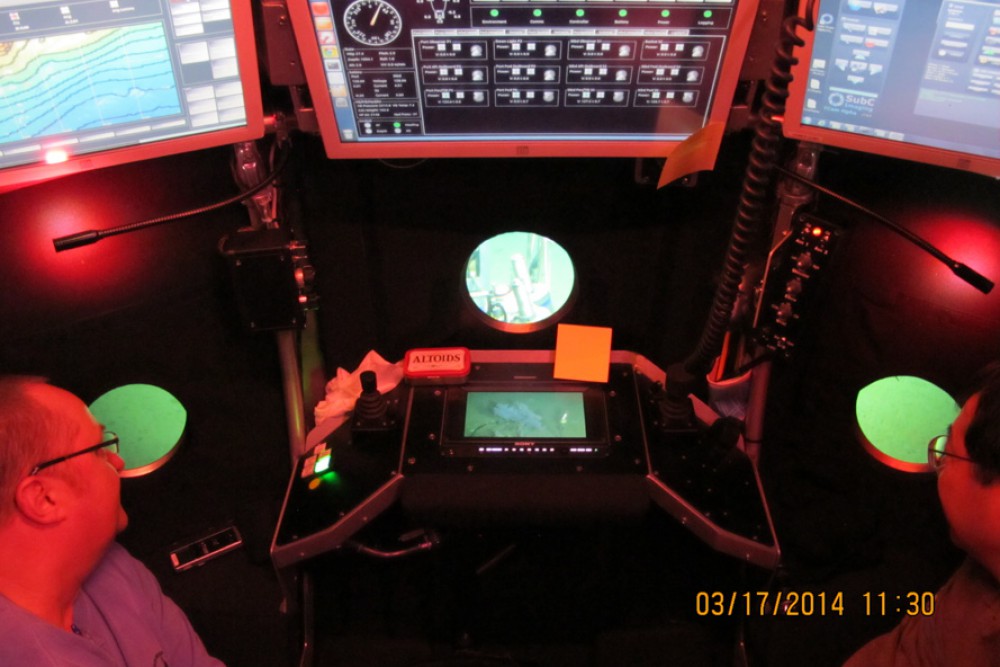
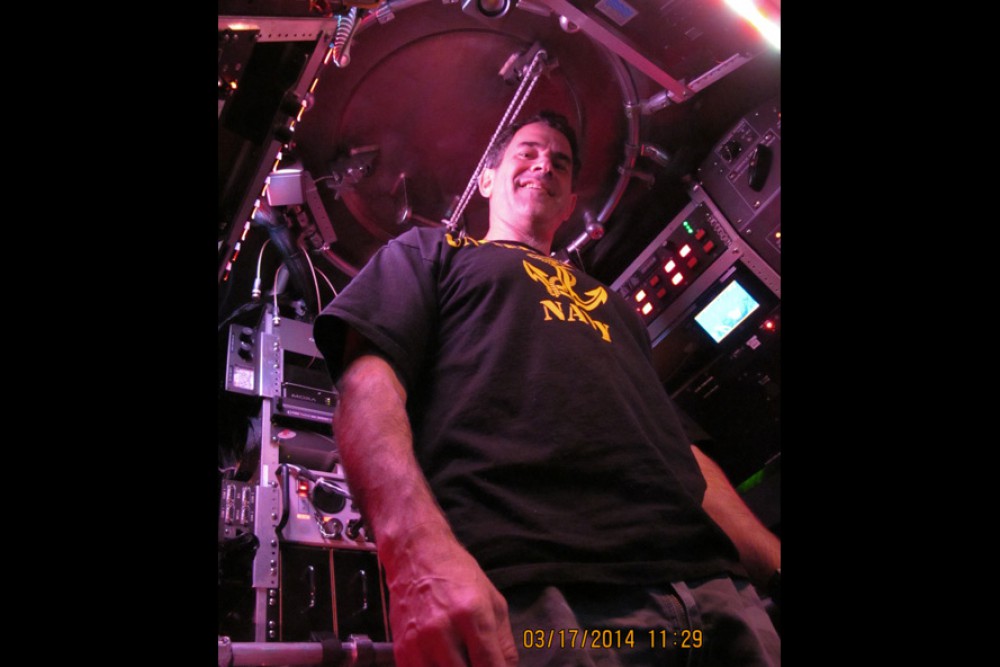
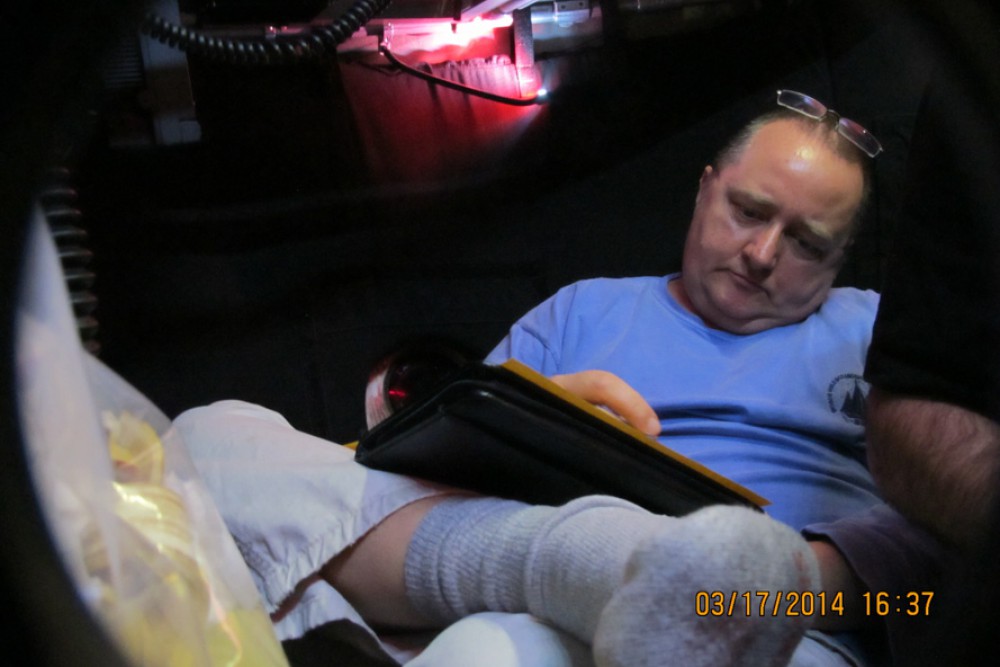
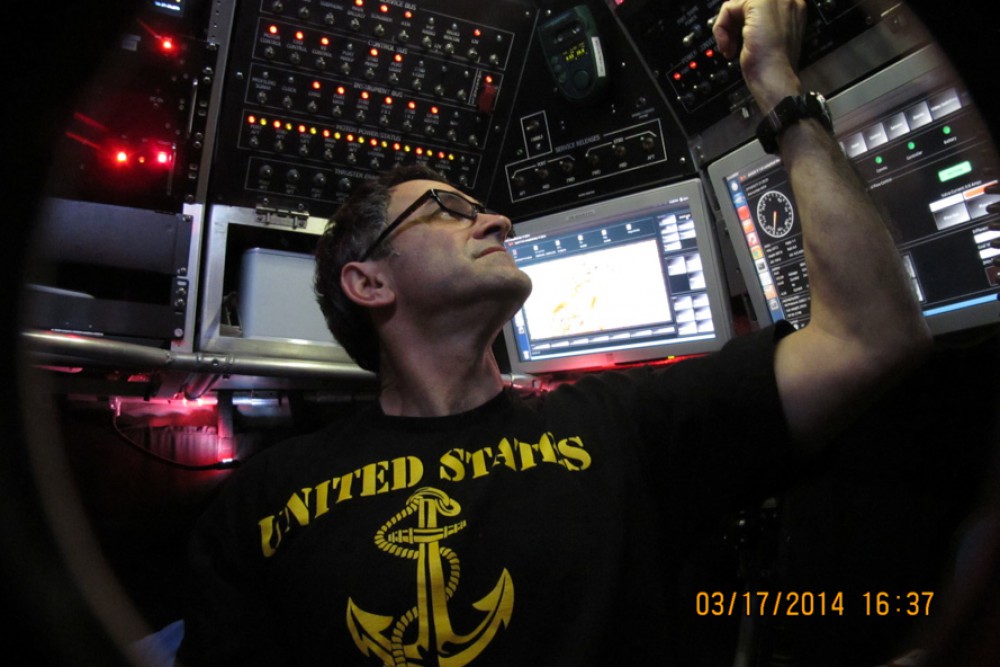
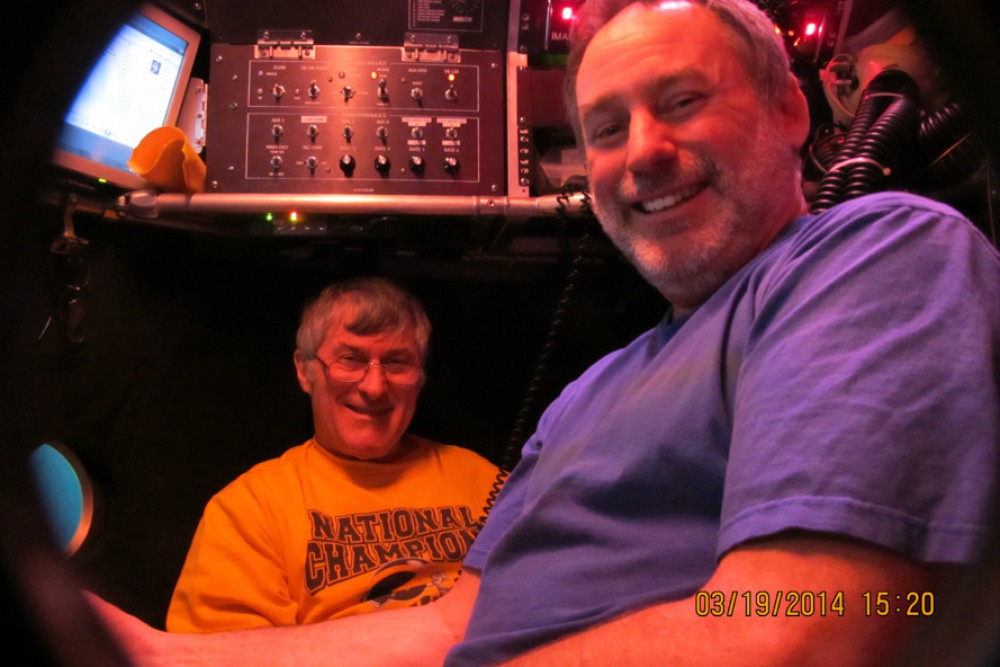
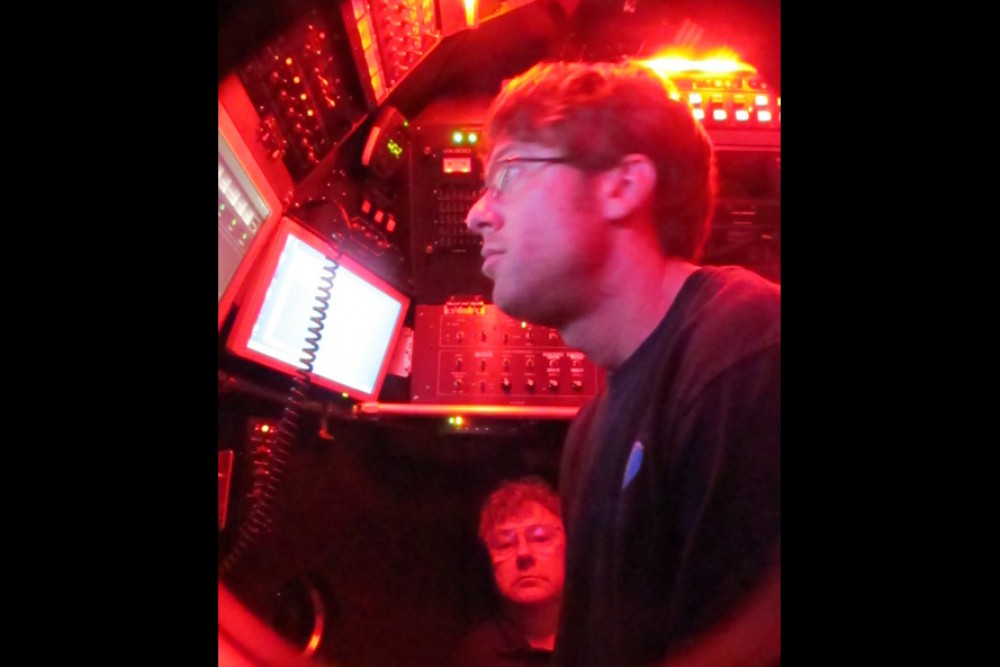
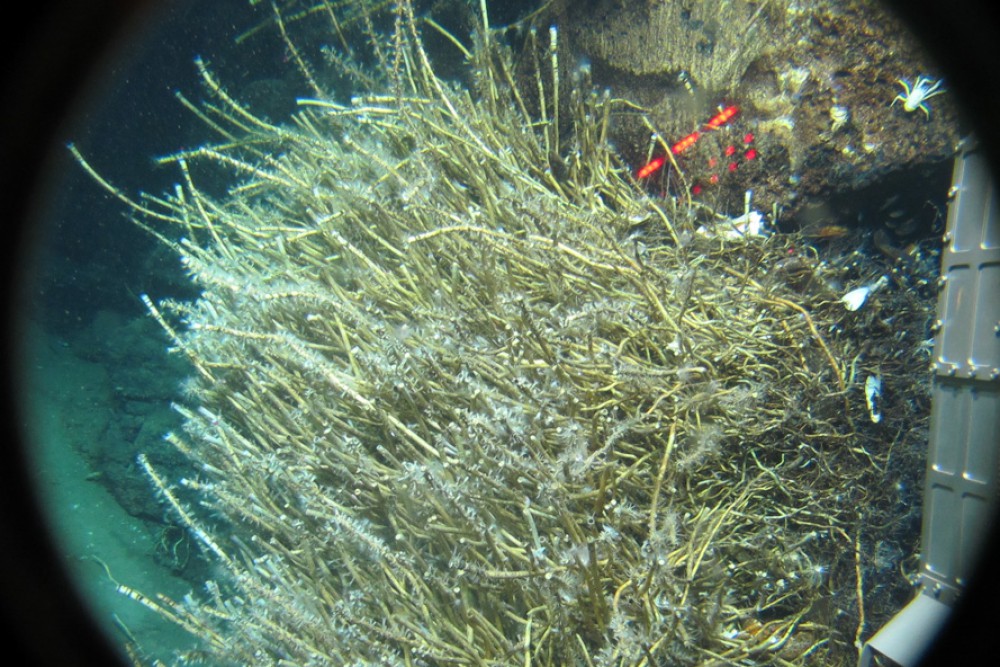
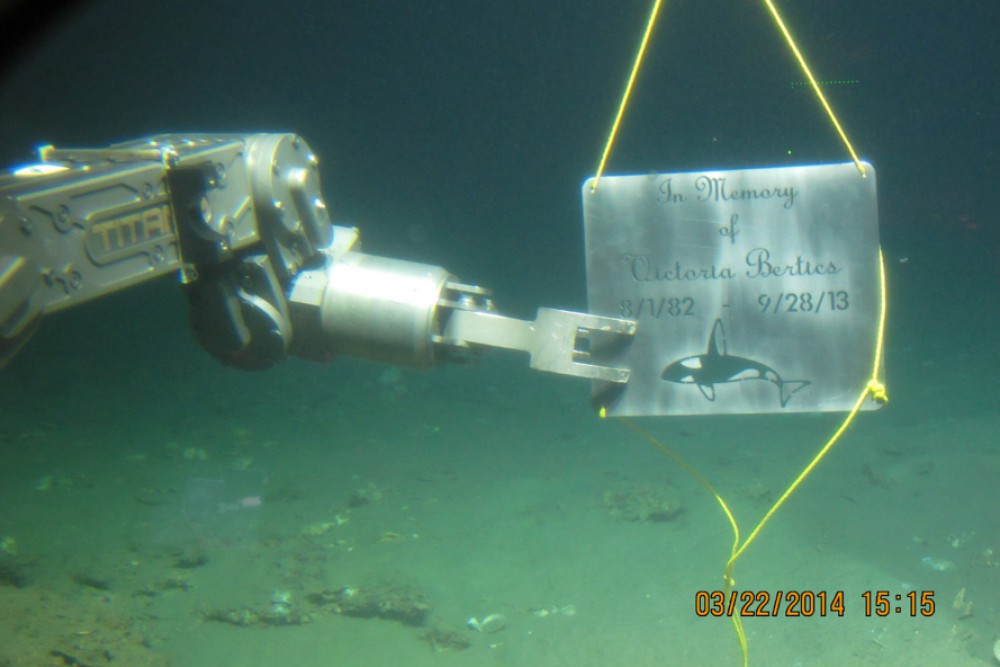
Scientist Chris German (WHOI) and Kang Ding (University of Minnesota) take in the view from Alvin’s two new forward-looking viewports on either side of the pilot’s station. (Photo by Bruce Strickrott, WHOI; Courtesy of Peter Girguis, chief scientist, Harvard; Funding agencies: NSF, ONR, NOAA; ©Woods Hole Oceanographic Institution)
Alvin Expedition Leader Bruce Strickrott demonstrates how he can stand up in the upgraded Alvin’s new larger 6.5-foot-diameter sphere, something he could never do in the old sub’s 6-foot-diameter sphere. (Photo by Kang Ding, University of Minnesota; Courtesy of Peter Girguis, chief scientist, Harvard; Funding agencies: NSF, ONR, NOAA; ©Woods Hole Oceanographic Institution)
Alvin’s new sphere has padded benches and 18 percent more volume than its predecessor, adding a bit of comfort to a cramped space. On the way back to the surface, WHOI scientist Chris German makes notes. (Photo by Kang Ding, University of Minnesota; Courtesy of Peter Girguis, chief scientist, Harvard; Funding agencies: NSF, ONR, NOAA; ©Woods Hole Oceanographic Institution)
The new Alvin is also equipped with new digital controls that allow pilots to automatically, rather than manually, maintain altitude from the seafloor, speed, or a position. (Photo by Kang Ding, University of Minnesota; Courtesy of Peter Girguis, chief scientist, Harvard; Funding agencies: NSF, ONR, NOAA; ©Woods Hole Oceanographic Institution)
Pilot Bob Waters, right, and University of Delaware chemist George Luther in Alvin’s new sphere, whose titanium hull is thicker than the old hull to someday extend the sub’s depth range to 6,500 meters. (Photo by Amanda Demopoulos, U.S. Geological Survey; Courtesy of Peter Girguis, chief scientist, Harvard; Funding agencies: NSF, ONR, NOAA; ©Woods Hole Oceanographic Institution)
Pat Hickey, who has made more than 600 dives in Alvin, instructs Chris Lathan, an Alvin pilot-in-training. (Photo by Adam Soule, WHOI; Courtesy of Peter Girguis, chief scientist, Harvard; Funding agencies: NSF, ONR, NOAA; ©Woods Hole Oceanographic Institution)
Tubeworms clusters around a crack on the Florida Escarpment, where chemical-rich groundwater seeps out into the sea. Symbiotic microbes inside the worms harvest energy from the chemicals and provide nourishment for the worms. (Photo by Adam Soule, WHOI; Courtesy of Peter Girguis, chief scientist, Harvard; Funding agencies: NSF, ONR, NOAA; ©Woods Hole Oceanographic Institution)
Harvard University scientist Peter Girguis used Alvin’s manipulator arm to place a memorial plaque on the seafloor for Victoria Bertics, a former graduate student. (Photo by Peter Girguis, Harvard University; Courtesy of Peter Girguis, chief scientist, Harvard; Funding agencies: NSF, ONR, NOAA; ©Woods Hole Oceanographic Institution)